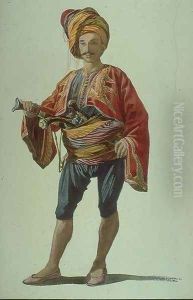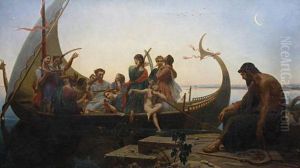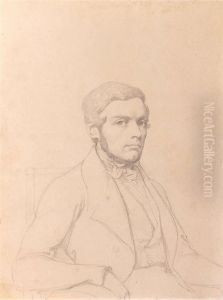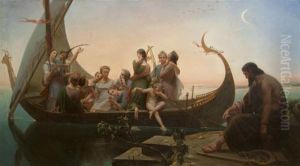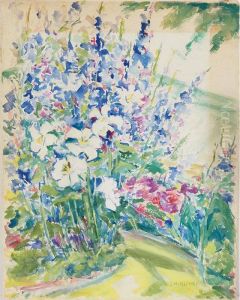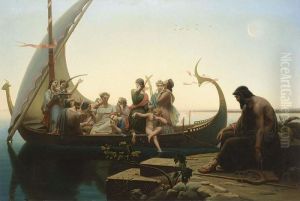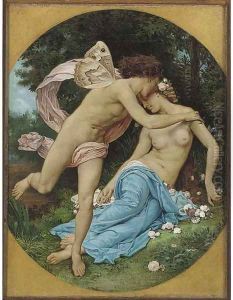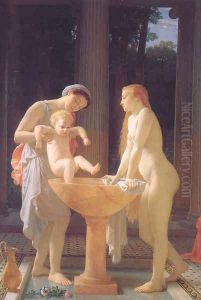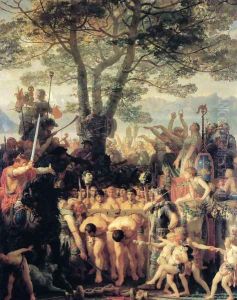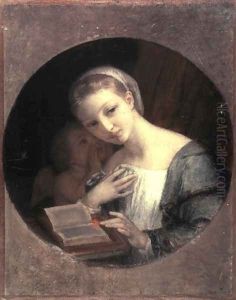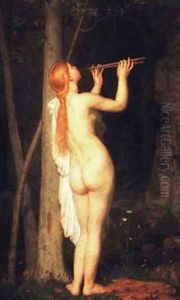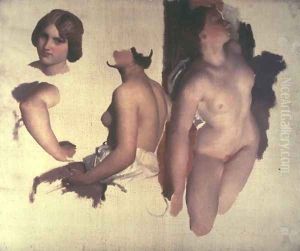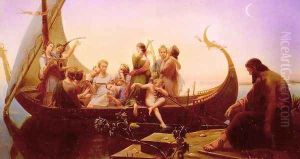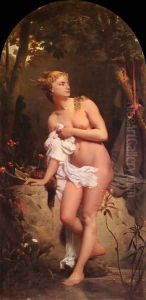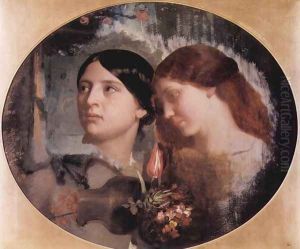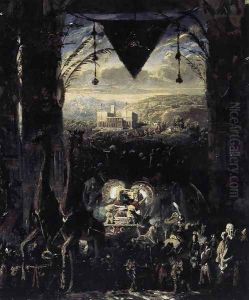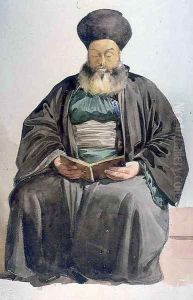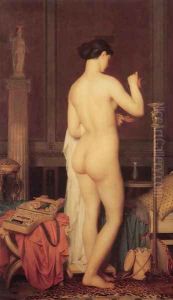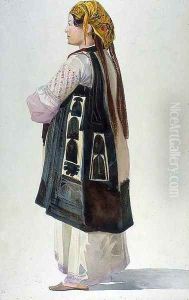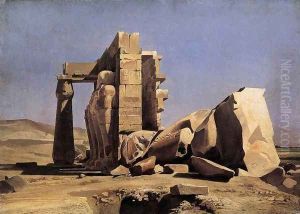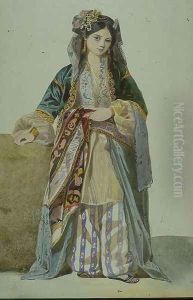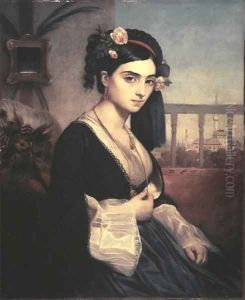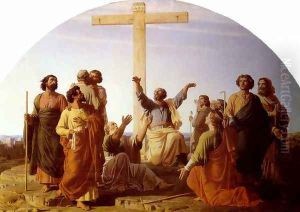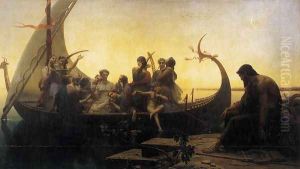Charles-Gabriel Gleyre Paintings
Charles-Gabriel Gleyre, a Swiss artist, was born on May 2, 1806, in Chevilly, near Lausanne. Gleyre is known for his neoclassical painting style, which later evolved to include elements of Romanticism. He studied art in Lyon and Paris, and his initial works were largely influenced by neoclassicism, following the tradition of Jacques-Louis David and Jean-Auguste-Dominique Ingres.
Gleyre's career took a significant turn after he spent several years in the East, especially in Egypt. The impact of these travels was evident in his later works, which often featured Orientalist subject matter with a sense of mystery and exoticism. Despite his talent and the quality of his paintings, Gleyre was somewhat overshadowed by more prominent artists of his time.
After returning to Paris, Gleyre became a well-respected teacher and took over the studio of Paul Delaroche in 1843. As an instructor, he was quite influential and taught many students who would later become notable artists in their own right, including Claude Monet, Pierre-Auguste Renoir, Alfred Sisley, and James Abbott McNeill Whistler. His teaching style was known for its emphasis on drawing and firm grounding in classical techniques.
Gleyre's works include 'The Evening' or 'Lost Illusions', which portrays poetic melancholy and is considered one of his masterpieces. It depicts a group of figures from Greek mythology in a twilight setting and reflects Gleyre's fascination with lost civilizations and the past.
Throughout his life, Gleyre was a private individual and often avoided the spotlight. His reticent nature meant that he exhibited less frequently than many of his contemporaries. Nevertheless, he received recognition from the French government, being awarded the Legion of Honour in 1849.
Gleyre's health began to decline in the 1860s, leading him to retire from teaching. He continued to paint but on a much smaller scale due to his failing eyesight. Charles-Gabriel Gleyre died on May 5, 1874, in Paris. After his death, his work gained more recognition, and he is now appreciated for his contribution to the academic tradition and his role in nurturing some of the leading lights of Impressionism.
